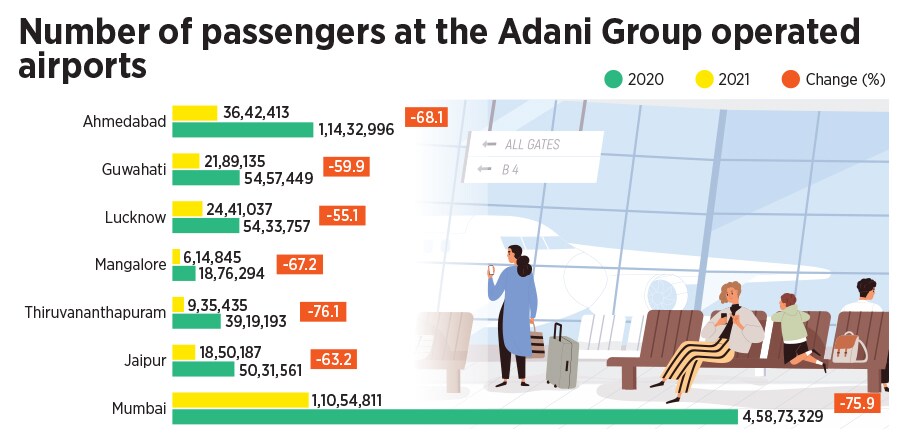
How the Adani Group became India's largest airport operator
After becoming India's largest private port operator, the Gautam Adani-led Adani group has turned all its attention to its airport business, which it forayed into barely a year ago
 Chhatrapati Shivaji International Airport, Mumbai. Photo by Satish Bate/Hindustan Times via Getty Images
Chhatrapati Shivaji International Airport, Mumbai. Photo by Satish Bate/Hindustan Times via Getty Images
There just seems to be no stopping the Adani juggernaut. Not even a pandemic.
Early this year, despite the Covid-19 pandemic wreaking havoc on the Indian economy, the Ahmedabad-based group splurged nearly Rs 15,000 crore to mop up three ports across India’s coastline to strengthen its role as India’s largest private port operator, accounting for over 25 percent of the cargo movements in the country. The group also sold a 20 percent stake in its barely six-year-old renewable energy company, Adani Green Energy, for $2.5 billion to Paris-based Total Energies. Last year, Adani Green had won the world's largest solar energy tender worth $6 billion.
Then, on July 13, less than a year after it forayed into India’s lucrative airport sector, the 32-year-old Adani Group managed a rather rare feat, something that even pioneers in India’s airport sector had not managed so far: The group became India’s largest airport infrastructure company, with one in every four passengers in India passing through an airport they run. The group’s airports also account for one-third of all the air cargo in the country.
The steady climb to the top, particularly as India’s aviation sector traverses some turbulence, came after the group took control of the Mumbai airport, a key gateway to India’s financial capital. Through its subsidiary Adani Airport Holdings Ltd (AAHL), the group acquired the Mumbai airport from Hyderabad-based GVK group, after buying a 50.5 percent stake in Mumbai International Airport Ltd (MIAL) last year.
AAHL acquired another 23.5 percent stake this February for Rs 1,685 crore from the two foreign partners in the company, Airport Company of South Africa and Bidvest, increasing its stake to 74 percent. The government-owned Airports Authority of India (AAI) holds the remaining 26 percent in MIAL. “AAHL is now India's largest airport infrastructure company, accounting for 25 percent airport footfalls. With the addition of MIAL, it will now also control 33 percent of India’s air cargo traffic,” the Adani Group said in a statement.




 Chhatrapati Shivaji International Airport, Mumbai. Photo by Nicolas Economou/NurPhoto via Getty Images
Chhatrapati Shivaji International Airport, Mumbai. Photo by Nicolas Economou/NurPhoto via Getty Images





